The imposition of kinesiology tape on the upper limbs area
Lymph drainage in upper limbs
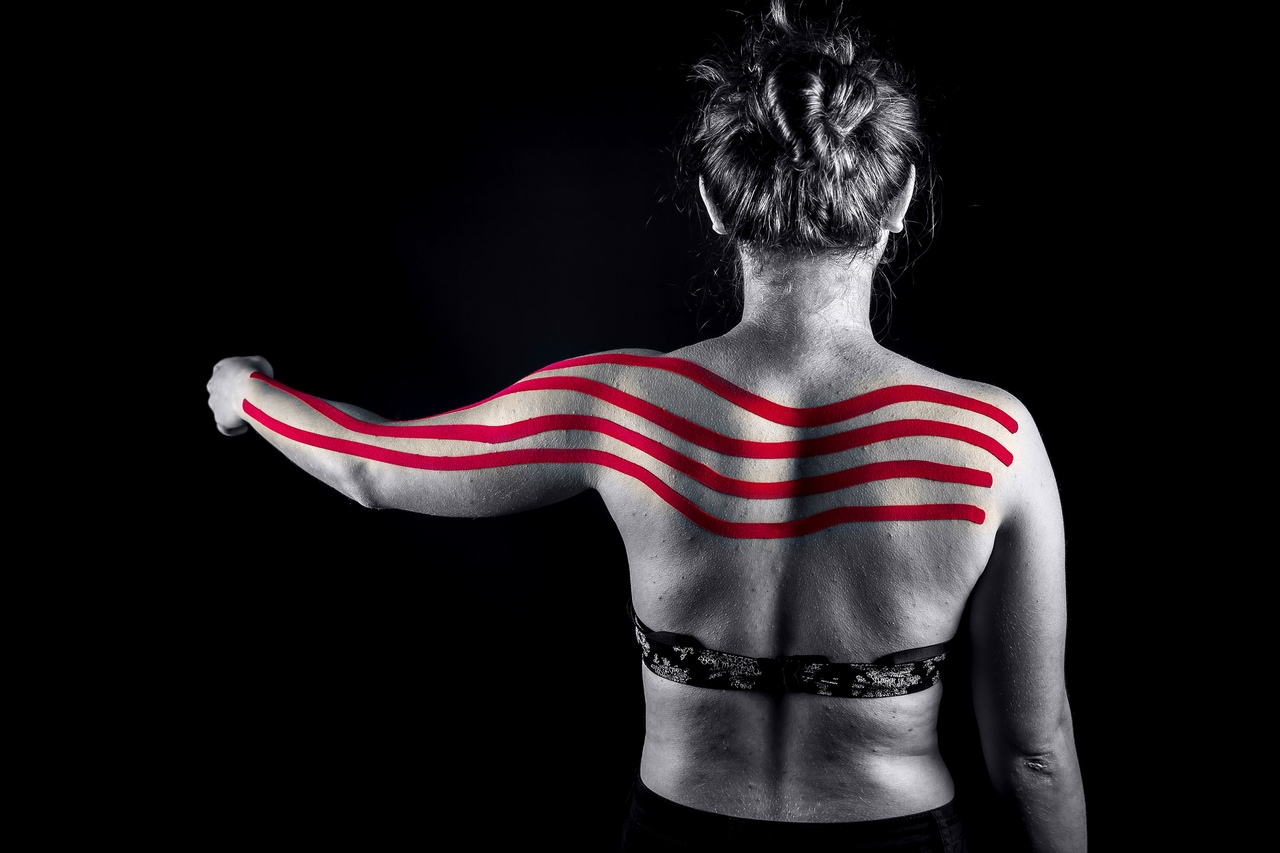
Indications: oedema of the lower limbs, lymphedema (in case of lymphatic stasis in oncology patients during post-operative period, this application should be used only after consultation with a physician).
1. This method requires 4–5 pieces of the tape approximately 80 cm long and 1.5 cm wide. The length of the piece directly depends on the patient’s anatomic features.
2. Apply the bases of all tapes on the region of opposite axillary lymph nodes.
3. Ask the patient for position of his/her arm so that the tape is applied on maximally stretched tissues.
4. Then apply strips of the tape on the limb by a spiral with a minimal tension.
External rotation of the upper limb
External rotation of the upper limb
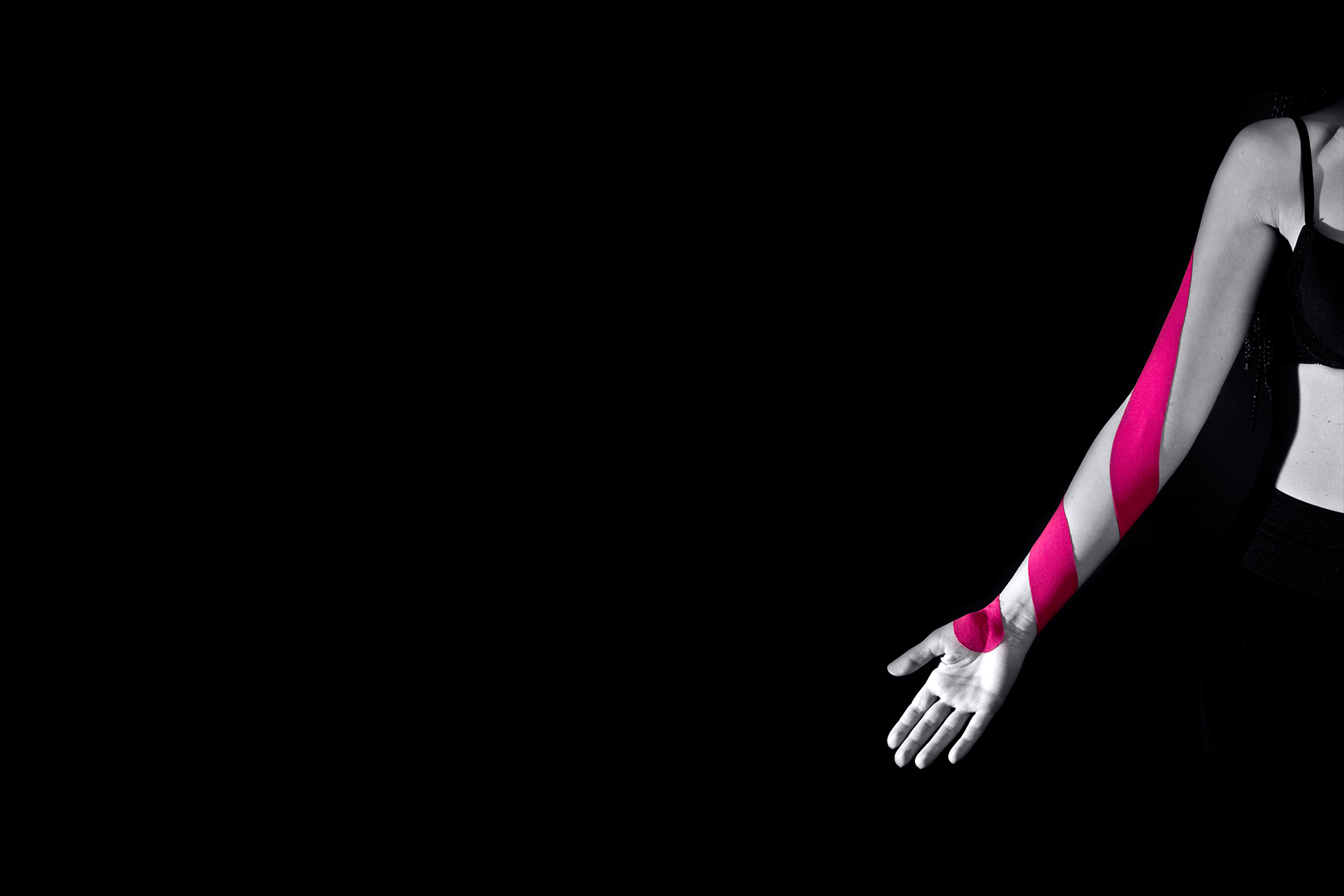
Indications: Correction, specific tasks in rehabilitation
1. This method requires one I-tape 40–50 cm long, depending on anatomic features of the patient.
2. Ask the patient to abduct his/her arm and perform a maximal external rotation (supination).
3. Apply the base of the tape without tension in the region of the wrist. IMPORTANT INFORMATION!!! Perform application of the tape in the lateral direction.
4. Then apply the tape spirally with a 40 % tension on the upper limb towards the shoulder joint.
ATTENTION!!! For stimulation of the internal rotation (pronation) — perform the same actions but in the opposite direction.
Cervicobrachialgia
Cervicobrachialgia
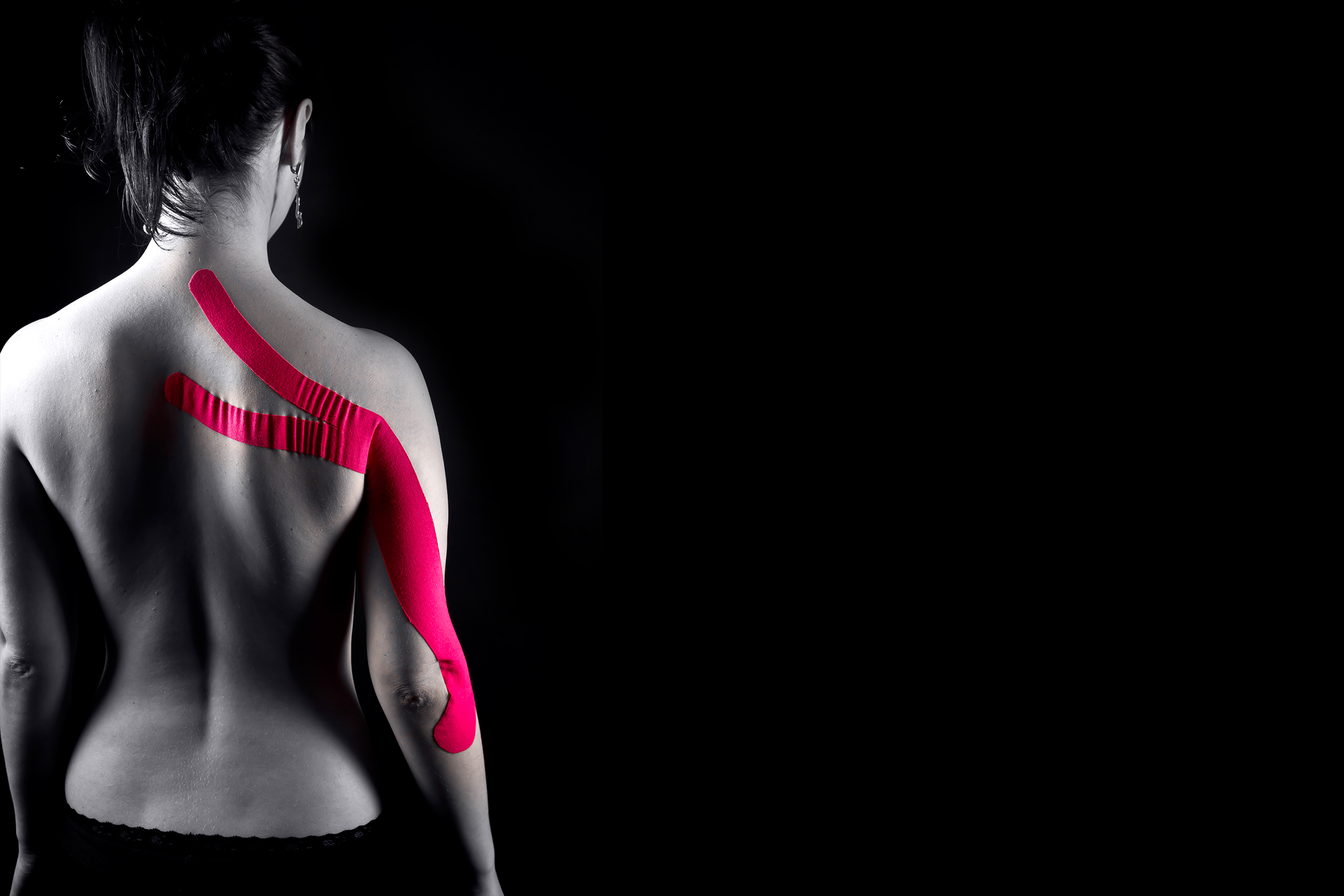
Indications: Cervicobrachialgia
1. This method requires one Y-tape.
2. Before applying the kinesiology tape, you need to stretch brachial plexus. For this purpose, it is important to follow further recommendations: bend the head to the side in opposite direction, abduct shoulder backwards and hang it downwards, abduct the arm backwards by 90˚, band the elbow also by 90˚, hand is in the neutral position.
3. Attach beginning of Y-tape to the ulnar surface of forearm distally in relation to elbow.
4. Then apply the tape along the posterior shoulder surface towards the shoulder joint.
5. Apply the upper end of Y-tape along descending part of trapezoid muscle, lower end of Y-tape — along the horizontal part of trapezoid muscle.
6. It is important to note that the body of the tape is applied with a 15 % tension, and, in turns, the base and anchors of tapes are applied without tension.
Correction of shoulder position
Correction of shoulder position
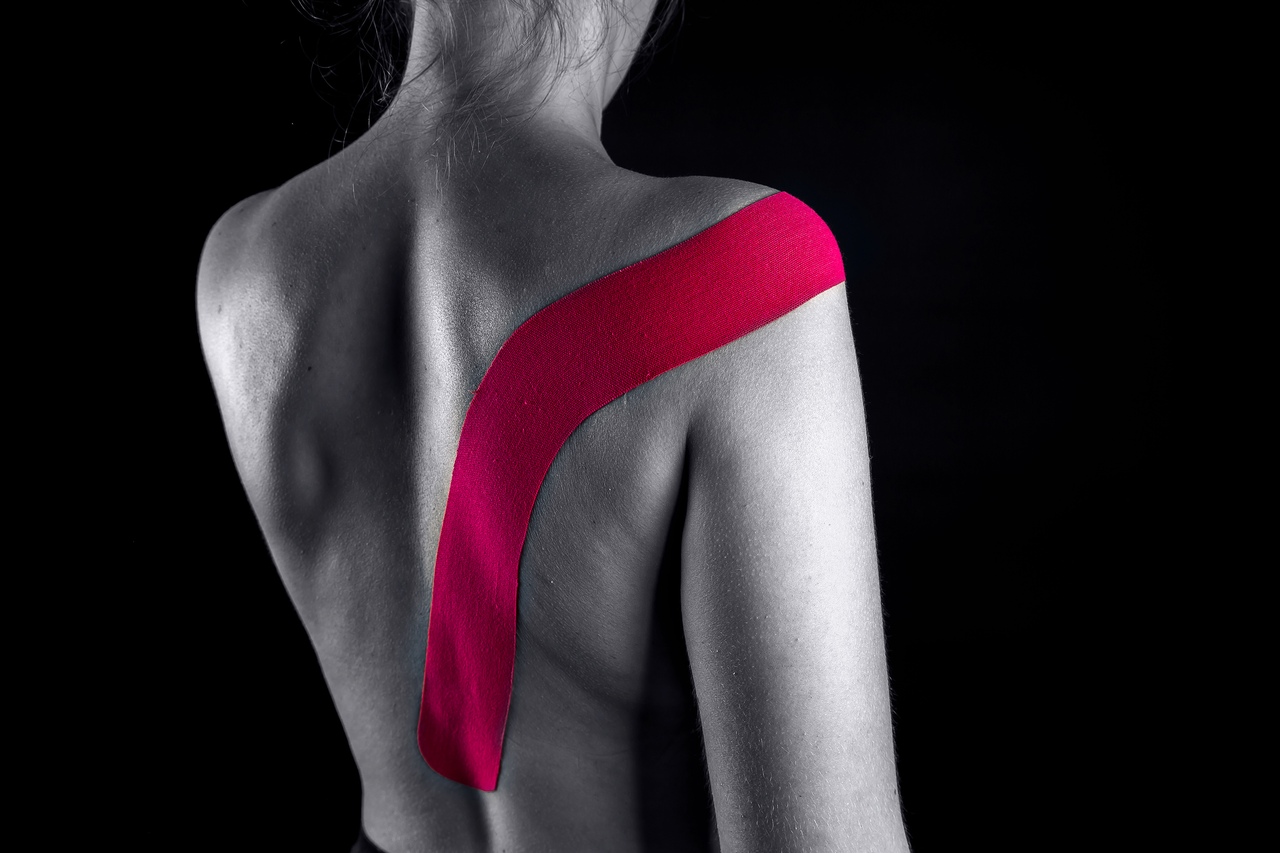
Indications: Correction of shoulder position, postural disorder, impingement syndrome
1. This method requires one I-tape approximately 30 cm long.
2. Ask the patient for external rotation of the upper limb. Start application of the tape from the anterior surface of shoulder, without tension, in the region of coracoid process.
3. Then apply the tape along the centre of the deltoid muscle through a humeral head with a maximal tension. Professional may regulate a tension for achievement of specified goal towards scapula.
4. After application of the tape to the region of the deltoid muscle, apply the tape without tension towards the centre of scapula.
Lymphatic drainage of upper limbs (Panch Taping)
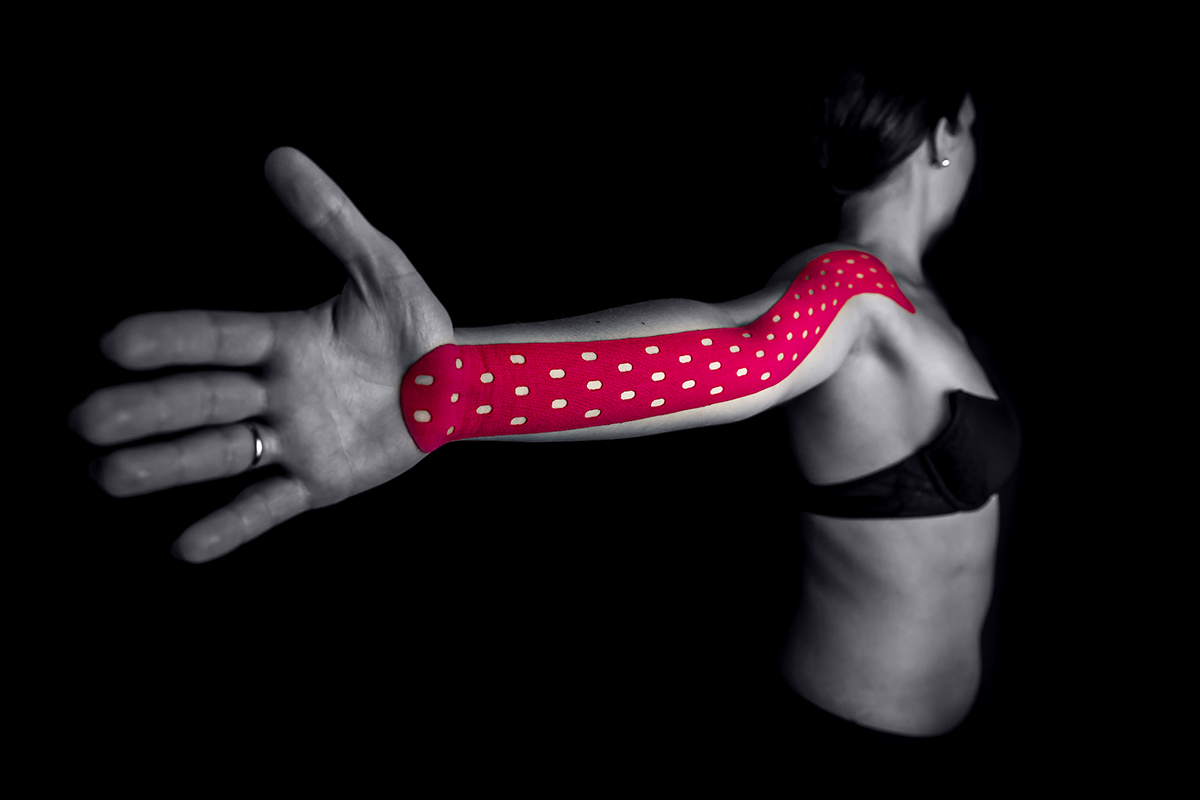
Indications: acute injury of upper limbs, oedema of the upper limbs, lymphedema (in case of lymphatic stasis in oncology patients during post-operative period, this application should be used only after consultation with a physician).
1. Cut off one pieces of Panch tape approximately 70 cm long. The length of the pieces directly depends on the patient’s anatomic features.
2. Apply the base of the tape without tension in the region of the axillary lymph nodes (also it is possible to apply tape bases on higher located lymph nodes, e.g. clavicular or cervical).
3. Ask the patient for position of his/her arm so that the tape is applied on maximally stretched tissues.
4. Apply Panch tape with a minimal tension on the upper limb in the distal direction.
March 2020
April 2020
May 2020
 Shopping cart (0)
Shopping cart (0)
